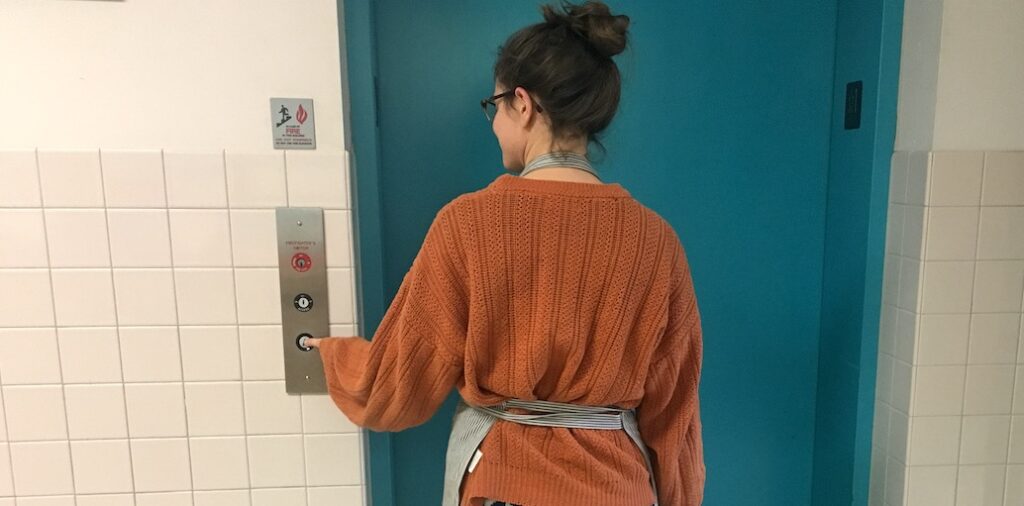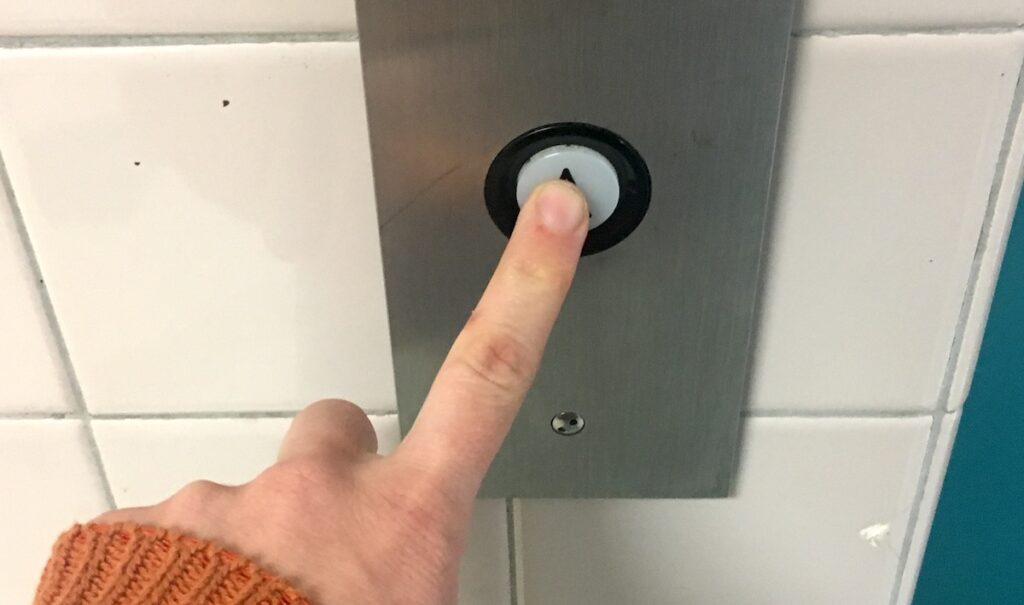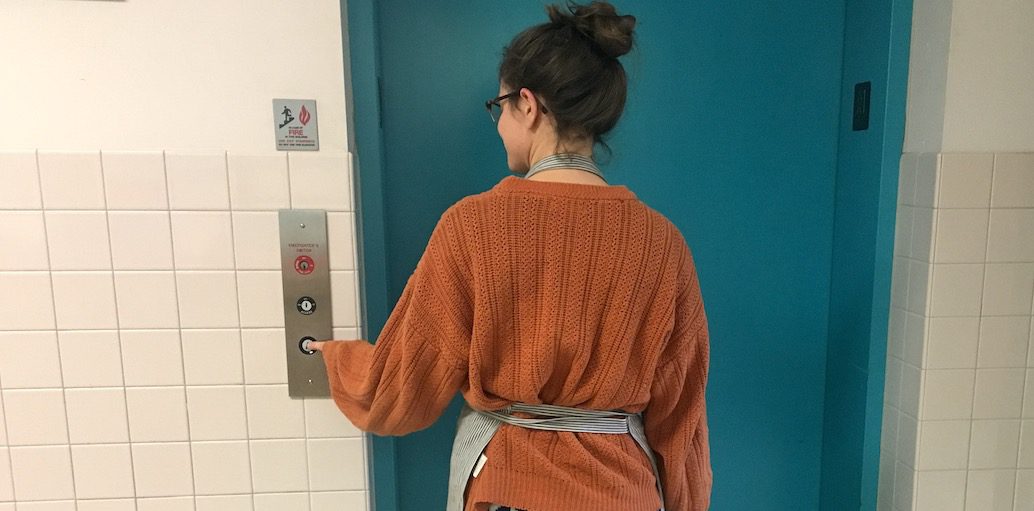Defending a process-based art program (or any art program for that matter!) can be challenging. Student learning looks different in an art room, especially a choice-based one. So, how do we as educators make sure our programs garner the support they deserve, even from the people who don’t agree?
Two Words: Elevator Pitch
An elevator pitch is a concise and persuasive speech that takes place during the length of an elevator ride. If you had 30 seconds, what would you say about your classroom to elicit support or change a nay-sayer’s mind?
Here are some tips on how to create your own elevator pitch to post on your website or deliver to your administrator in the hallway.

1st: Identify the Issues
First, you’ll need to hook your audience. What does art education need? Perhaps you can appeal to your audiences’ experience with art education or something that is lacking in education today.
For instance, you might refer to how art instruction has long been only for the talented and mainly existed in the hands of the art teacher. Perhaps your administrator had that same type of experience in art class growing up.
Appeal to a problem they need to solve, such as this one:
“I know when I was growing up, my art classroom was a place to follow the teachers’ directions and make art that looked exactly like everyone else’s. All of our students are immensely creative and also immensely different. It’s hard for them to feel successful in the art room when there’s only one right answer.”
Once you’ve hooked them…
2nd: Explain Your Program
The next step is to explain your classroom. And, more specifically, how your classroom solves the issues in art education you set forth earlier.
In this new age of differentiation and student-directed learning, old ways of teaching art are on the way out.
Find what’s unique about your particular philosophy or art program such as:
- Does your classroom support social-emotional learning for students, especially those with unique needs?
- Do you feel it taps into new approaches to learning such as STEAM, PBL, or student-directed spaces?
- What does your classroom offer that students won’t find in a traditional classroom that also supports the mission of your school?
Once you’ve created a list, boil it down the essentials. Keep what is unique to your program and also what fits the goals your school is striving to attain.
3rd: Engage them to continue the conversation.
This may look like asking an open-ended question, giving them your contact information or website, making a meeting to discuss your goals further, or inviting them into your classroom to observe you.
How you proceed all depends on who you’re “in the elevator” with, whether it is a colleague, administrator, or parent, and what their response to your pitch is. If you’re making an elevator speech for social media or a website, add some links for people to continue their research!
Edit your speech and test it out on friends. Then…
4th: Practice, Practice, Practice!
You’ll want to have your elevator speech down to a science, so you’re ready when you need to be. Use a timer and practice in front of a mirror or record yourself on your phone or computer. Your speech should be under 30 seconds while still having all the important information!

A Sample Elevator Speech
When thinking about putting an elevator speech together, it can be helpful to have a concrete example for inspiration.
So, as one example out of thousands, let’s say you want to switch from a traditional art room to more of a choice-based model. You schedule a short meeting with your administrator and want to start with your elevator speech. You might say something like:
“Hey, Sue. Thanks so much for taking the time to meet with me! I’m thinking about changing up what I do in the classroom and wanted to get your thoughts.”
(Gets in imaginary elevator.)
“When I was growing up, my art classroom was a place to follow the teachers’ directions and make art that looked exactly like everyone else’s. But I’m starting to realize it’s hard for my students to feel successful in art when there’s only one right answer. And, although I provide some choice in my classroom, my current curriculum and set up follows this same path I experienced as a student.
I’ve been learning about a new model where the art room set up in stations to make the room feel more like a real art studio. The teacher still teaches techniques and concepts but then works to support students in choosing their own materials and projects. It sounds incredibly exciting to me, and I’d like to pilot this approach next semester. I’d love to work on a proposal that we could meet about in a few weeks, and to know what you think!”
This is not the only formula for creating a classroom elevator speech. Obviously, like any good chef, you’ll want to try out your own twists and ingredients to fit your unique needs. Whether you’re pitching a transition to a new teaching model, already in an established classroom, or just campaigning for more support, your elevator speech should evolve and grow over time.
Post your elevator speech in the comments or share it with us on social media!
To whom would you most like to present an elevator speech about your classroom?
Magazine articles and podcasts are opinions of professional education contributors and do not necessarily represent the position of the Art of Education University (AOEU) or its academic offerings. Contributors use terms in the way they are most often talked about in the scope of their educational experiences.





